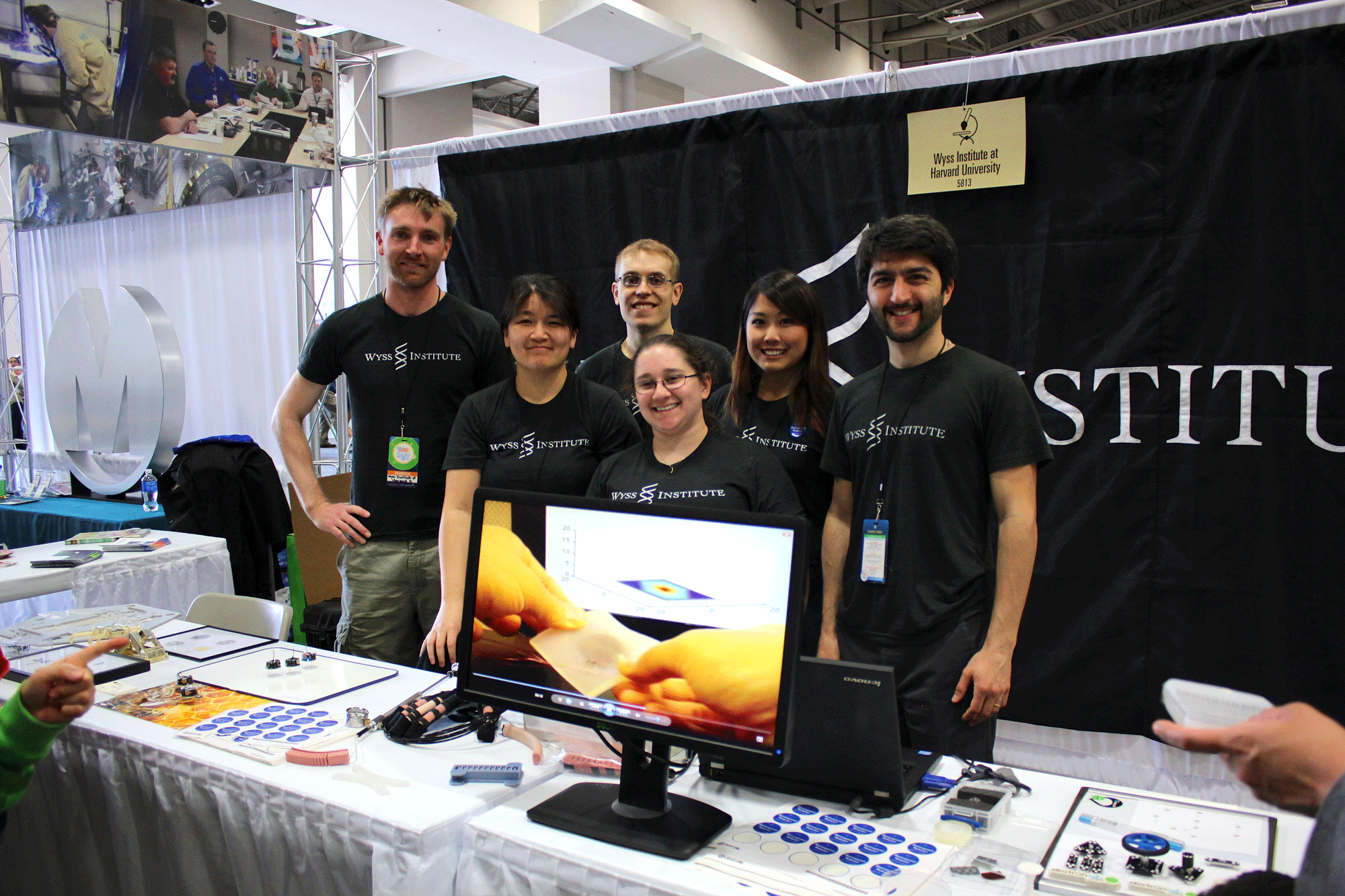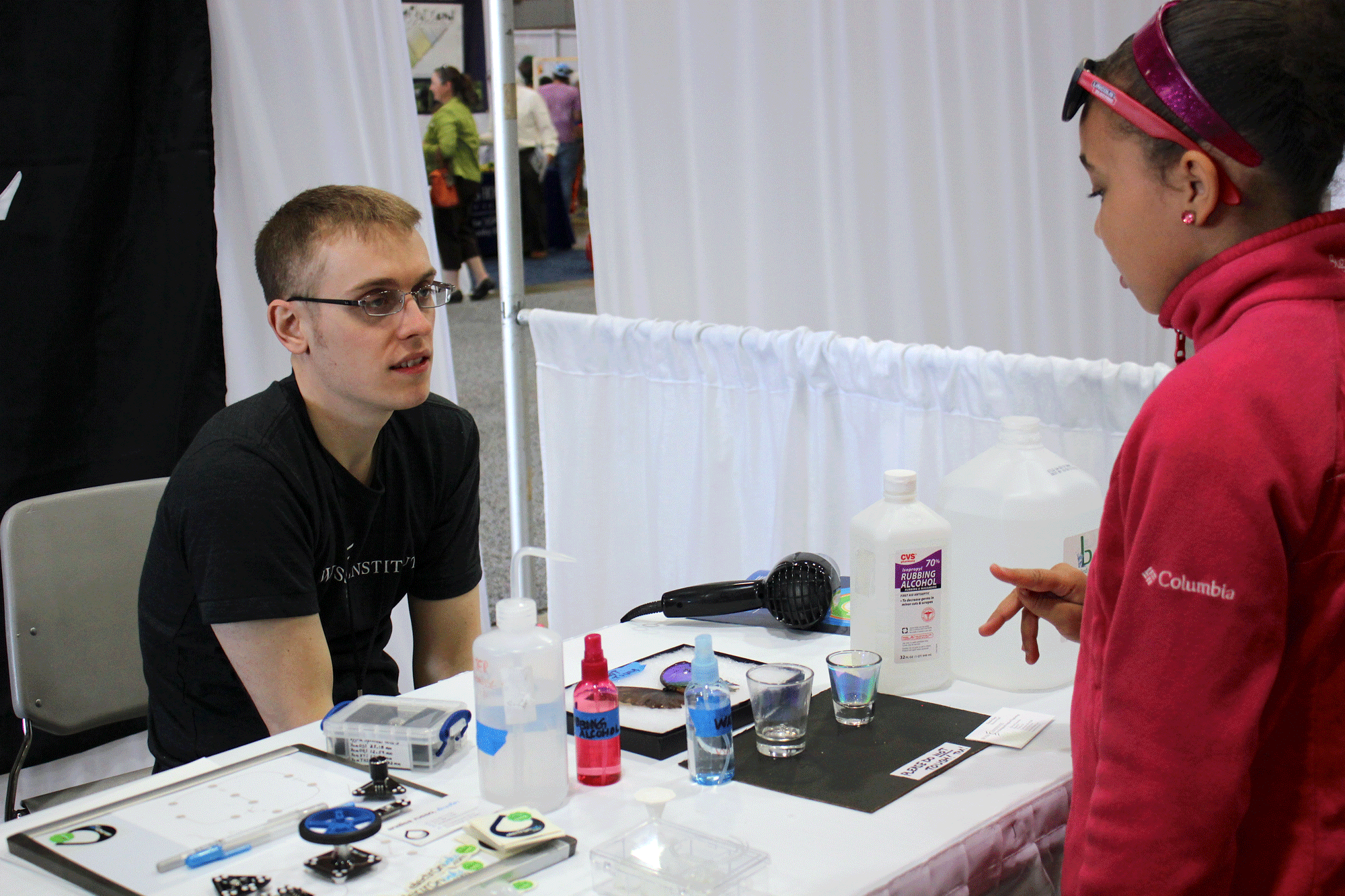How do you build a robot that can fly like a bee or one that can help with surgery? How do you 3D-print a battery or make a surface that changes color when exposed to different liquids? These are some of the bioinspired projects that members of Wyss Institute platforms discussed with hundreds of young minds at the 2014 USA Science and Engineering Festival in Washington, DC.

Through video demonstrations, hands-on activities, and touchable prototypes, the Wyss team introduced a world of bioinspired technologies and possibilities to a new generation of budding scientists and engineers.
The educational outreach, which took place this past weekend, aimed to encourage students from kindergarten through twelfth grade to get excited about science and engineering. To that end, many cutting edge technologies were featured at the event, including the 3D printing of soft matter and electrically conductive inks developed by Wyss Core Faculty member Jennifer Lewis and her team.
Curious minds of all ages swarmed the Bioinspired Technologies booth to watch robots developed by Core Faculty members Radhika Nagpal and Rob Wood and their teams come to life. There were robotic bees that might one day assist dwindling bee populations in pollination duties; squishy, soft robots that can crawl around obstacles and might one day be used to search disaster sites; and printed, foldable robots that in the future could self-fold and be used to transport materials in environments where transportation costs are high.
Wyss Institute researchers also taught attendees about collective robotics and gave a live demonstration of a swarm of kilobots – the quarter-sized bug-like devices that move around, interacting and coordinating their own behavior as a team. In another demonstration, the W-Ink technology developed by Core Faculty member Joanna Aizenberg and her team was used to identify unknown liquids based on their surface tension.

While the Institute’s outreach efforts are meant to be exciting and fun, they also serve a very serious purpose — helping ensure that the scientists and engineers of the future are both well prepared and enthusiastic about developing innovative solutions to our growing global challenges.
Many Wyss community members have contributed to the success of this educational outreach effort. Special thanks to the students and researchers who represented the Wyss Institute and our Enabling Technology Platforms at the event: Michelle Rosen, Natalie Ching-Shin Koay, Thomas Ober, Richard Moore, Yigit Menguc, and Evelyn Park.